History of the Australian tank Centurion: survived the nuclear test and fought in Vietnam
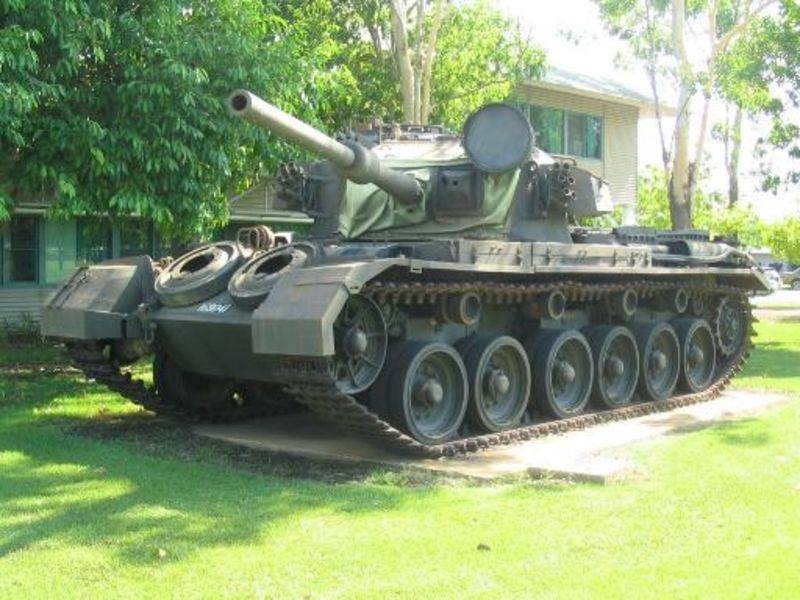
History of the creation of the Centurion Mk.3 tank
After the heavy German appeared on the battlefield in the second half of World War II Tanks, in the UK, work began on the creation of armored vehicles capable of resisting them on equal terms. In the framework of the concept of a “universal tank”, which in the future was intended to replace the infantry and cruising tanks that were in service, the A41 project was created. This car was subsequently sometimes called the British Tiger. However, a comparison with the German heavy tank Pz.Kpfw. Tiger Ausf. H1 is not quite correct. The Tiger, weighing 57 tons, was about 9 tons heavier than the first modification of the Centurion. At the same time, the mobility and range of the German and English tanks were very close. The British and German tanks were approximately equivalent in protection in the frontal projection, but the side armor of the Centurion 51 mm thick, even taking into account the 6 mm anti-cumulative screens, was thinner than that of the Tiger covered with 80 mm side armor. Nevertheless, the Centurion was a very successful combat vehicle for its time, which had a high modernization potential. Serial production of new tanks was carried out at the enterprises of Leyland Motors, Royal Ordnance Factory and Vickers.
In the last days of World War II, six prototypes left the assembly line of the plant, but when they arrived in Germany, the war was already over. Subsequently, during the hostilities in Korea, India, Vietnam, the Middle East and Angola, the Centurion proved to be one of the best tanks of the post-war period. In total, more than 1962 Centurion tanks of various modifications were built before the 4400 year.
The first serial modification of the Centurion Mk.1 was armed with an 76-mm gun, created on the basis of the towed anti-tank gun QF 17 pounder. At a distance of up to 900, the gun could successfully deal with most German tanks, but the effect of a high-explosive fragmentation shell was weak. An 20-mm Polsten gun was installed in the turret as an additional weapon; it was replaced with a BESA rifle-caliber machine gun on the Centurion Mk.2 modification. On Centurion tanks, starting with this option, six 51-mm grenade launchers were installed in front of the turret for firing smoke grenades. All machines of MK.2 modification at the beginning of 1950's were upgraded to MK.Z.
In the 1947 year, the main modification was adopted - the Centurion Mk.3 with the 20-pound gun QF 20 pounder caliber 83,8 mm. At a range of 914 m, an armor-piercing projectile with an initial speed of 1020 m / s could penetrate homogeneous armor along the 210 mm normal. Penetration of an armor-piercing projectile with an initial speed of 1465 m / s, at the same range reached 300 mm. Subsequently, later modifications armed the 107-mm rifled semi-automatic gun L7, which was better suited for fighting Soviet T-54 / 55 / 62 tanks.
The Centurion Mk.3 tank received a weapon stabilizer in the vertical and horizontal guidance planes. The creation of the serial two-plane, reliable Metrovick FVGCE MK.1 stabilizer was a great success for the British, which significantly increased the effectiveness of the tank on the battlefield. The presence of a two-plane stabilization system significantly increased the likelihood of an enemy entering the tank. At a speed of 10-15 km / h, the firing efficiency did not differ significantly from the probability of being hit from a standstill. In addition, the stabilizer not only increases the accuracy of shooting in motion, but also the average speed of the tank on the battlefield, thereby reducing its vulnerability.
On the tank Centurion Mk.3 installed gasoline 12-cylinder V-shaped liquid-cooled engine Rolls-Royce Meteor 650 hp and transmission Merrit-Brown. The power unit was a further development of the engine and transmission of the Cromwell and Comet I.
The participation of the Centurion Mk.3 Type K tank in a nuclear test at the Emu Field test site
At the beginning of the 1950's, Australia, as the closest ally of Great Britain, began to receive the Centurion Mk.3 tanks, which at that time were very modern. In total, the Australian army ordered the 143 Centurion. Among the vehicles sent by sea was a tank with the serial number 39 \ 190, assembled at the Royal Ordnance Factory in 1951. In the Australian armed forces, the armored vehicle was assigned the 169041 number and used at a tank training ground. Subsequently, it was this tank that it was decided to use in a nuclear test known as Operation Totem-1.
At the beginning of the 1950's, Great Britain entered into a “nuclear race,” but since nuclear testing required a safety testing ground, the British agreed to allocate sites with the government of the Green Continent. Under the nuclear test site, a vast territory was determined in the southern part of Australia, in 450 km north of Adelaide. This area was chosen due to its very weak population. The wilderness was never used in economic activity, but the nomadic paths of local natives passed here. The Totem test site identified an area in the Victoria Desert, known as Emu Field. In 1952, a runway 2 km long and a residential village were built here on the site of a dried-up lake. Since the British were in a great hurry to build up and improve their nuclear potential in terms of reliability and efficiency, work was progressing at a fast pace.
An implosive nuclear explosive device based on Plutonium-240 was tested as part of the creation of the British Blue Danube atomic bomb. The nuclear charge was placed on the top of a steel tower 31 m high. Various measuring instruments were placed around the tower, but unlike the first American and Soviet atmospheric nuclear test explosions, no structures or fortifications were built. In order to assess the effects of nuclear damaging factors weapons, individual samples of weapons and military equipment were delivered to the training ground, among which was a tank taken from the Australian army Centurion Mk.3 Type K.
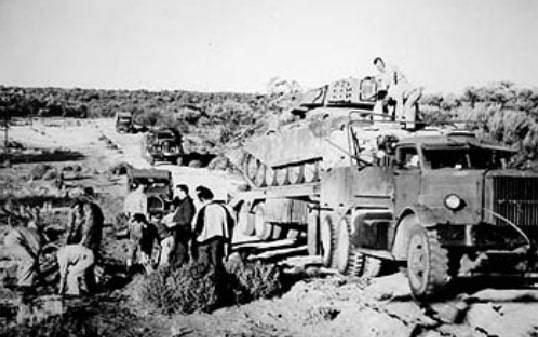
Delivery of the armored vehicle to the landfill was carried out with great difficulties. Due to the remoteness and lack of a good road, the trailer that the tank was carrying stuck in the sand. The Centurion drove the last part of the way to the test site under its own power. At that time, the car odometer showed only 740 kilometers.
Before a nuclear explosion, a full ammunition load was loaded into it, fuel tanks were filled and tank mannequins were placed. According to the scenario of the exercises, a car with a running engine was placed at a distance of 460 meters from the tower with a nuclear charge.
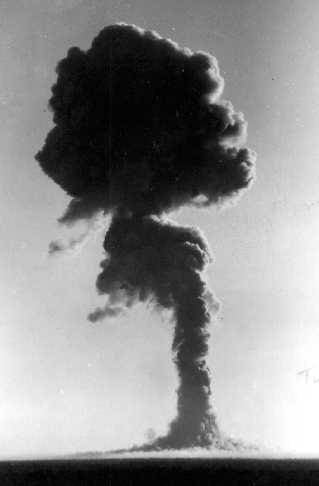
An energy explosion near 10 CT scorched the desert of 15 on October 1953 in 07.00 local time. The mushroom cloud formed after the explosion rose to a height of about 5000 m and, due to the lack of wind, scattered very slowly. This led to the fact that a significant part of the radioactive dust raised by the explosion fell in the vicinity of the landfill. The Totem-1 nuclear test, despite its relatively low power, turned out to be very dirty. Severe radioactive contamination occurred at a distance of up to 180 km from the epicenter. The so-called "black fog" reached Velbourne Hill, where Australian aborigines suffered from it.
Despite the relative proximity to the explosion point, the tank was not destroyed, although it was damaged. The shock wave moved him to 1,5 m and deployed. Since the hatches did not lock from the inside, they were opened by the force of an explosion, as a result of which some internal parts and mannequins were damaged. Under the influence of light radiation and a shock wave that carried tons of sand abrasive, the glass of optical instruments became cloudy. The canvas cover of the gun mask was burnt, and the side screens tore and thrown away at 180 meters. The roof of the engine compartment was also damaged. However, when examining the tank, it turned out that the engine was not badly damaged. Despite extreme pressure drops and the effect of an electromagnetic pulse, the motor continued to run, and only died out after the fuel in the tanks ran out.
Evacuation from a nuclear test site, decontamination, repair and modernization of the "atomic tank"
Three days after the nuclear test, the crew, having carried out the minimum necessary repair work, took its places in the tank and left the test site on its own. However, it was not possible to go far, the engine, clogged with sand, soon jammed and the Centurion was evacuated on a trailer, which was towed by two tractors.
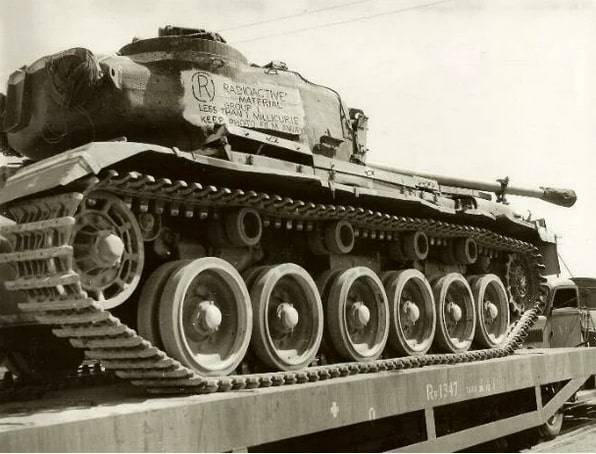
At the same time, none of the tanks involved in the evacuation used protective equipment, although inscriptions about the danger of radiation were applied to the tower. Subsequently, 12 of the 16 troops working with the 169041 board died of cancer.
After the tank was delivered to the Woomer test site, it was decontaminated and put on the storage site. In 1956, the induced radiation in the armor weakened to a safe value, and after a dosimetric examination, the Centurion was sent to the Pukapunyal tank test site, located in southeastern Australia, 10 km west of Seymour. The failed engine was replaced, and the tower with the clouded observation devices and a defective sight was dismantled. In this form, the "atomic tank" was operated as a tractor, and two years later it was sent for overhaul. During the repair and modernization, the tank was brought to the level of Centurion Mk.5 / 1, arming the 105-mm gun L7. With such a gun, the Centurion could deal with all types of tanks that were then in the Soviet Army. From 1959 to 1962, the tank with the 169041 number was in storage, after which it was transferred to the training center of the 1 armored regiment.
The participation of the "atomic tank" in the Vietnam War
In 1962, the Australian leadership decided to support the US struggle against the offensive of communist forces in Southeast Asia. Initially, a small group of advisers was sent to Saigon, but as the conflict escalated, they sent transport and combat aircraft, armored vehicles and regular ground units to South Vietnam. The Royal Navy destroyers of Australia were involved in the American patrol of the coast of North Vietnam. The number of Australians at the peak of the conflict at the end of the 1960's reached 7672 people. In combat operations until 1971, 9 infantry battalions participated. In total, more than 50 000 Australian troops passed through the Vietnam War, of whom 494 people died, 2368 people were injured, two people were missing.
To support the Australian infantry fighting in the jungle, 1968 armored regiment tanks were sent in 1. Among the armored tracked vehicles delivered by sea to South Vietnam was the hero of our story. The tank was assigned the tactical number 24C and in September was brought into combat service. In a tank platoon, where the Centurion was operated as a command vehicle, among other crews it was known as the Sweet Fanny.
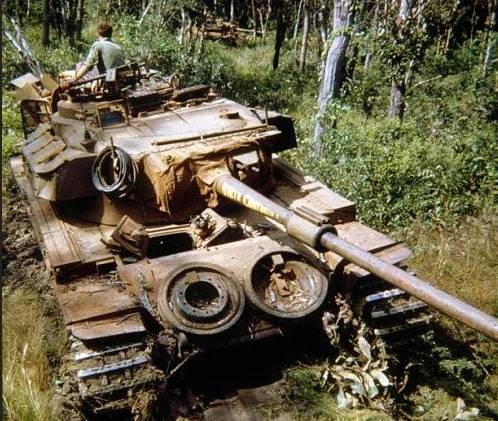
The Centurion’s crew periodically participated in combat operations without excesses until, on May 7 of the year, during the battle, the tank was hit by a cumulative grenade (most likely released from the RPG-1969). The shell pierced the armor in the lower left of the fighting compartment. The cumulative stream went diagonally, severely injuring the gunner. Other crew members after the evacuation of a wounded colleague took up a defense in the tank. Although the armor was pierced, the explosion did not damage vital knots, and the tank remained operational. By that time, the Centurion had a run of more than 2 km, needed to be repaired, and they decided to send it back to Australia. In January 4000, tank No. 1970, along with two other defective armored vehicles, was sent to the South Vietnamese port of Vung Tau for loading onto a ship bound for Melbourne.
Service "atomic tank" after returning from Southeast Asia
After arriving in Australia, in May 1970, the damaged vehicle was delivered to a tank repair facility in Bandiana. During the next major overhaul, the tank was equipped with an advanced optical range finder and an IR projector, designed to ensure the operation of night vision devices.
Overhaul and modernization work was completed at the end of the 1970 year, and after several years at the Centurion storage base, it was transferred to the 1 armored regiment. This time the tank was given the tactical number 11A and the unofficial name "Angelica". His active service continued until the end of the 1976 year, until the 1 armored regiment was rearmament on the Leopard AS1 (1A4) tanks.
The decision to purchase West German Leopards intended to replace the Centurions was made on a competitive basis, after comparative tests of the Leopard-1A4 and the American M60A1 in the summer of 1972 at the Queensland tropical training ground. The contract with Germany for the supply of 90 line tanks, 6 armored recovery vehicles and 5 bridge pavers was concluded in the 1974 year.
Although the Centurion, which went through the nuclear test site and the Vietnam War, was deposited in the first half of the 1977 year, a few years later it was returned to the 1th armored regiment.
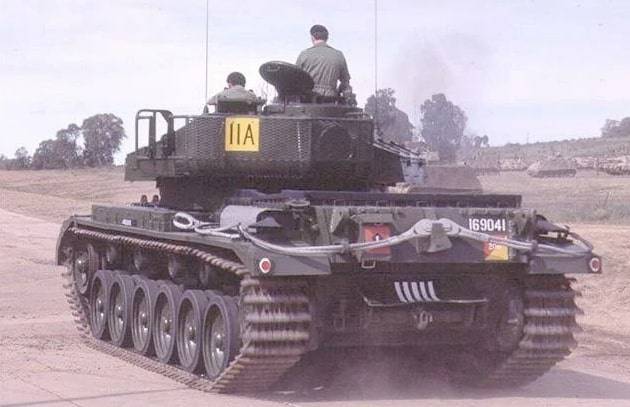
The machine, brought to perfect condition by the regiment repair service, was used during various celebrations. The last time the tank number 169041 participated in the farewell parade of the Chief of General Staff H.J. Coates in April 1992 of the year. In November 1992, an “atomic tank” was erected as a monument on the territory of the Robertson Barracks military base, approximately 15 kilometers east of downtown Darwin.
At present, the main base of the Australian ground forces on the Northern territory of Australia is located here, and until the 2013 of the year the headquarters of the 1-th armored regiment was located.
In total, the tank served 23 of the year, including 15 months spent in South Vietnam. In 2018, a memorial plaque with the main milestones of his biography was fixed on the armor of the "atomic tank".
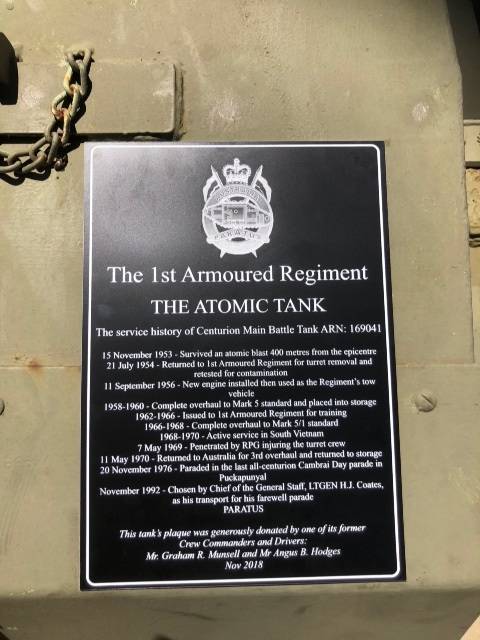
In addition to tank No. 169041, two more Australian Centurions participated in tests known as the Operation Buffalo at a nuclear test site in the vicinity of Maraling, but this machine was the only one commissioned after the direct impact of the damaging factors of a nuclear explosion.
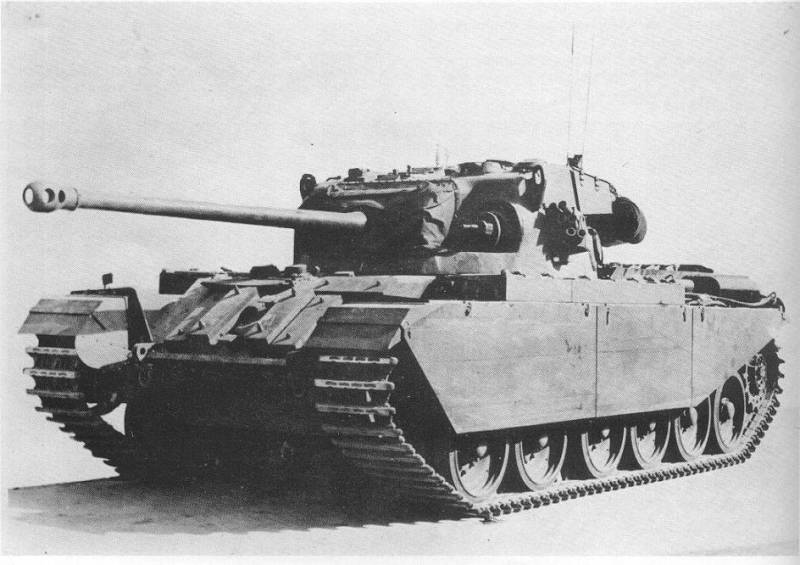
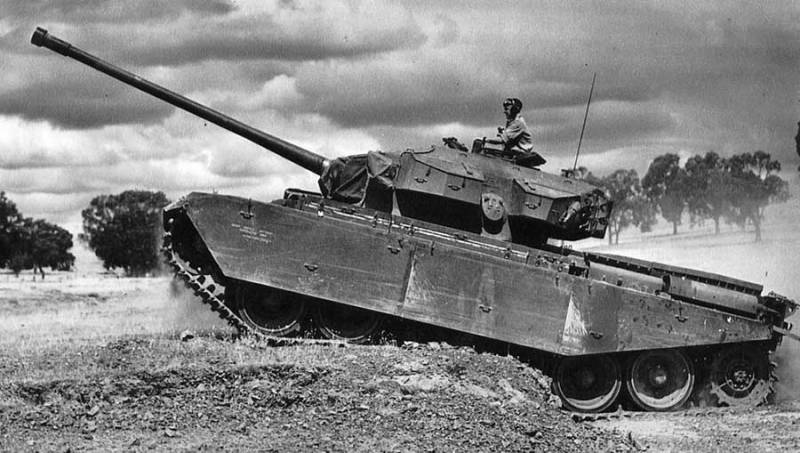
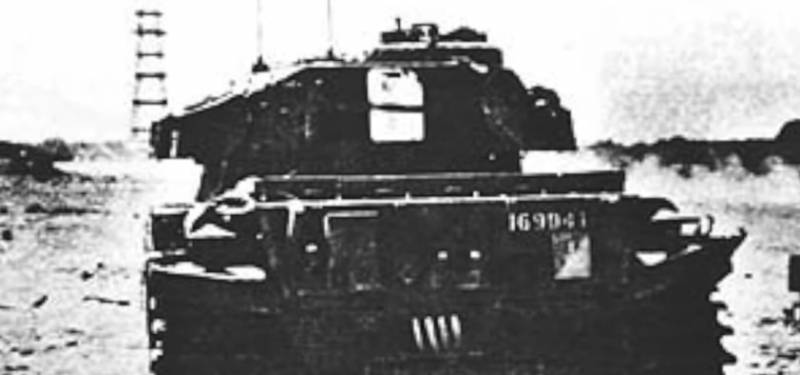
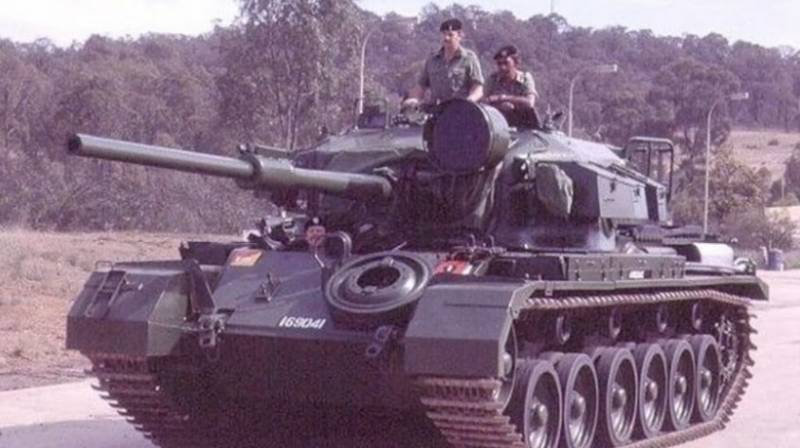
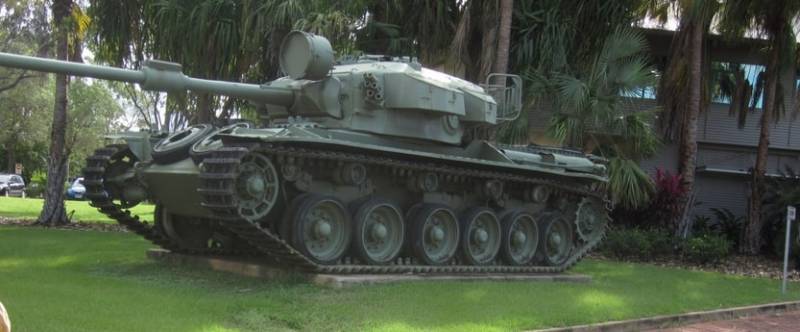
Information